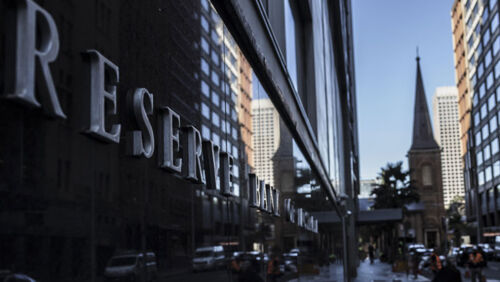Homeowners brace for repayment jump as RBA hikes again
By Tom Watson
It may be a new year, but the Reserve Bank has delivered a familiar result and a further blow to Australians homeowners with a mortgage.
The RBA lifted the official cash rate by 25 basis points to 3.35% at its first board meeting of 2023 this afternoon, with the ninth consecutive increase pushing the cash rate up to the highest point it's been since September 2012.
Given that the latest figures show that headline inflation rose by 7.8% in the year to December - the highest it's been since 1990 - today's rate hike was largely expected, with governor Philip Lowe once again reiterating the central bank's desire to see inflation reined in.
"Global inflation remains very high. It is, however, moderating in response to lower energy prices, the resolution of supply-chain problems and the tightening of monetary policy. It will be some time, though, before inflation is back to target rates.
"The Board's priority is to return inflation to target. High inflation makes life difficult for people and damages the functioning of the economy. And if high inflation were to become entrenched in people's expectations, it would be very costly to reduce later.
"The Board is seeking to return inflation to the 2-3 per cent range while keeping the economy on an even keel, but the path to achieving a soft landing remains a narrow one."
Nalini Prasad, a lecturer at the University of New South Wales' School of Economics, says that the strong inflation figures in December forced the Reserve Bank's hand.
"While the effects of previous cash rate increases are still flowing through to the economy, underlying inflation remains strong.
"Inflation over the year to the December quarter 2022 was higher than expected by the RBA and the labour market remains strong. Monetary policy should be tightened to reduce inflationary pressures."
Mortgage holders $11,172 worse off
While the Reserve Bank keeps its gaze firmly on inflation, borrowers will be bracing for more flow-on rate increases from their lenders which, depending on the size and length or their loan and their current interest rate, will likely add tens or even hundreds of dollars to their monthly repayments.
Of course, after eight interest rate hikes in 2022, today's change will only add to the considerable uplift in repayments that homeowners with a mortgage have already been dealing with.
A typical owner-occupier with a $500,000 home loan, for instance, paying a variable rate of 3.08% in April 2022 will have seen their annual mortgage costs grow by $11,172 if their lender passes on today's hike (25bp), in addition to the RBA's previous increases (300bp), in full.
Mortgage rate and repayment increases (April 2022 - February 2023)
Those who have copped the full sweep of interest rate hikes and haven't contacted their lender for a discount or considered a switch to a rival for a better rate are being urged to do so though.
"If you have watched your variable rate rise in-line with the RBA cash rate increases, then it's time to do something about it and refinance," says Mozo personal finance expert, Claire Frawley.
"Lazy home loan customers shouldn't just sit back and watch their variable rate increase, they need to be proactive. Lenders often have lower interest rates to attract new customers, so borrowers need to take charge."
Plenty of homeowners are taking action though. In November and December alone borrowers refinanced $38.5 billion worth of loans to new lenders which, according to the Australian Bureau of Statistics, is the largest amount on record.
Is the peak in sight?
It might come as little solace to Australians currently dealing with prospect of even higher mortgage repayments, but the end of Reserve Bank's current rate-rising cycle may be drawing closer.
In a survey of 40 economists and other experts conducted by Finder before today's decision, 75% said that they believed the cash rate would reach a peak at some point in the first half of 2023, with an average predicted peak of 3.75% among respondents.
When that halt in rate increases becomes reality though will largely depend on the direction of inflation says survey respondent and associate professor of Economics at the University of Sydney, Mark Melatos.
"Inflation, especially the trimmed mean of the Consumer Price Index, remains significantly above the RBA's target band. The RBA is still in catch-up mode with respect to matching their cash rate settings to the inflation reality.
"The RBA's hand is likely to be forced by continued monetary policy tightening by other central banks. This means the cash rate will likely need to be raised steadily throughout much of 2023. The RBA is only likely to pause raising the cash rate once the trimmed mean starts to fall."
The Reserve Bank board will hand down its next monetary policy decision, including any changes to the cash rate, on March 7.
Get stories like this in our newsletters.



